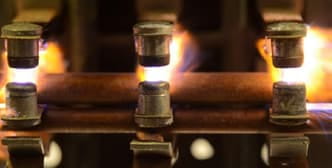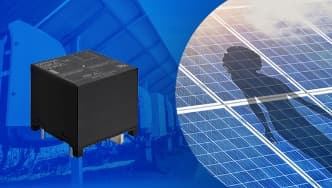Safe interruption of
high-capacity loads
A. Contribution to clean energy-related equipment
High-capacity power relay G9KB
Since bidirectional switching is possible, switching during charging and discharging a storage battery is realized with a single unit.
G9KB contributes to miniaturization and weight reduction of equipment, and low heat generation inside the equipment due to low contact resistance.
(UL 60947-4-1/
IEC 61810-10 certified)

The value of Energy Storage Systems that allow energy consumption to be separated in time from the charge of energy (ESS) is growing in response to social changes such as the need to achieve carbon neutrality and strengthen disaster resilience.
However, it has been challenging to popularize these systems, especially in the home market.
The high capacity of ESS has led to an increase in the installation footprint because of the large size of the equipment and the shortened life of printed circuit boards which occurs as a result of the substantial heat generated inside the equipment.
OMRON's power relay G9KB can achieve bidirectional switching with a single unit while retaining high-voltage and high-capacity switching capability (600 VDC, 50 A). The smaller size, lighter weight, and lower heat generation inside the equipment help solve installation restrictions and extend the service life of clean energy-related equipment.
When G9KB is used in a 600 VDC charging/discharging system
(Switchable during charging and discharging with a single unit)
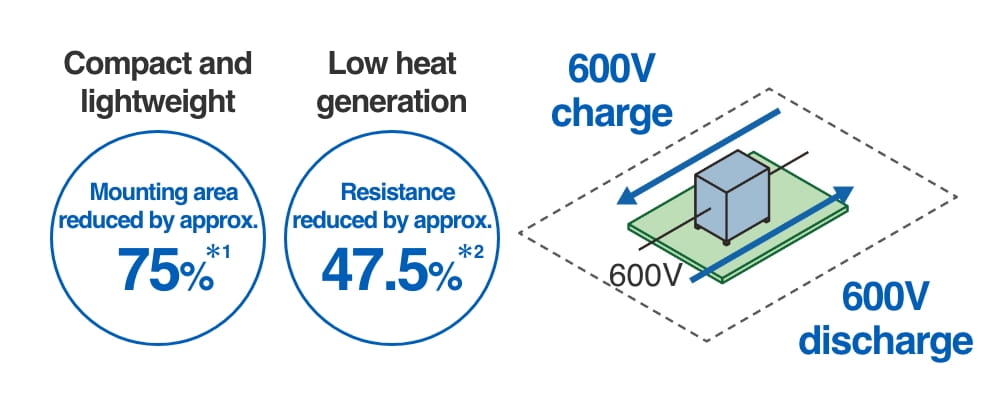
*1. Comparison of total area occupied by relays when replacing four conventional high-capacity power relays with a single G9KB relay.
(According to OMRON's research in May 2023)
*2. Comparison of resistance value (initial value) at 20A energization between general high-capacity power relays and G9KB
(According to OMRON's research in May 2023)
[ The value DMS provides ]
- Replacement of multiple contactors and relays with a single G9KB enables equipment to be smaller and lighter (reduced footprint).
- Low contact resistance (5 mΩ or less) enables lower heat generation (more cost-effective due to higher charging efficiency and longer service life).
- UL 60947-4-1/IEC 61810-10 certified G9KB can be safely applied to safe disconnection applications for energy storage system (ESS) for power storage systems.
High-capacity and bidirectional switching reduces path resistance and the number of mounted parts
![[When using multiple conventional relays] Four 400 VDC relays required (two diodes required), [When using G9KB] Supported by one 600 VDC relay (no diode required) Mounting area reduced by approx. 75%*1 [When using multiple conventional relays] Approx. 8.0 mΩ / 2 units in series, [When using G9KB] 5.0 mΩ or less / 1 unit ●Heat generation is reduced by eliminating the need for diodes. Resistance reduced by approx. 47.5%*2 [When using multiple conventional relays] ●Two 400 VDC relays are required for each 600 VDC charging and discharging. ●Conventional relays can only handle current in one direction, so two lines are required for charging and discharging. Result: Four 400 VDC relays and two diodes are required [When using G9KB] ●High-capacity type supported by one 600 VDC relay (600 VDC, 50 A) ●Bidirectional switching allowing for a single line ●UL 60947-4-1 and IEC 61810-10 certified ●Small floor area (W37.0 mm x L50.5 mm x H50.5 mm) Result: Can be handled with one G9KB relay](/sites/default/files/2023-07/dms-gp_products_relay_g9kb_02_pc_v2_en.jpg) |
Note: For a system that charges and discharges at 600 VDC
*1. Comparison of total area occupied by relays when replacing four conventional high-capacity power relays with a single G9KB relay. (According to OMRON's research in May 2023)
*2. Comparison of resistance value (initial value) at 20A energization between general high-capacity power relays and G9KB (According to OMRON's research in May 2023)
OMRON's arc interruption analysis technology
-- high-capacity, bidirectional switching realized in an air-break type --
Generally, when turning DC current on or off, an arc occurs between the contacts of a switching device. In bidirectional switching applications such as energy storage system (ESS), it is necessary to interrupt the arc and prevent welding of the contacts even if the direction of the current is reversed. However, it is not easy to design a relay that can safely cut off current in both directions with the same structure, because the direction and characteristics of the arc also change when the direction of current flow changes.
The G9KB uses arc control technology using permanent magnets and three-dimensional arc analysis technology (CAE technology) to realize a structure that is not affected by the direction of the current in an air-break type. Highly reproducible CAE technology has been established through industry-academia collaboration, thereby achieving both miniaturization and high capacity.


NOTE. If the current flows in the opposite direction, the arc direction is reversed.
Related contents
UL 60947-4-1 and IEC 61810-10 certified relay
As devices related to solar power generation systems continue to increase in voltage and capacity, the importance of a safe disconnection function is becoming increasingly important. In accordance with this, stringent standard requirements may be requested for PCB relays as well.
Although OMRON's G9KB is a PCB relay, it has obtained UL 60947-4-1 and IEC 61810-10 standards with the same structure, which are stringent requirements for switching devices such as contactors. It can be reliably applied to safe disconnection applications for energy storage system (ESS).
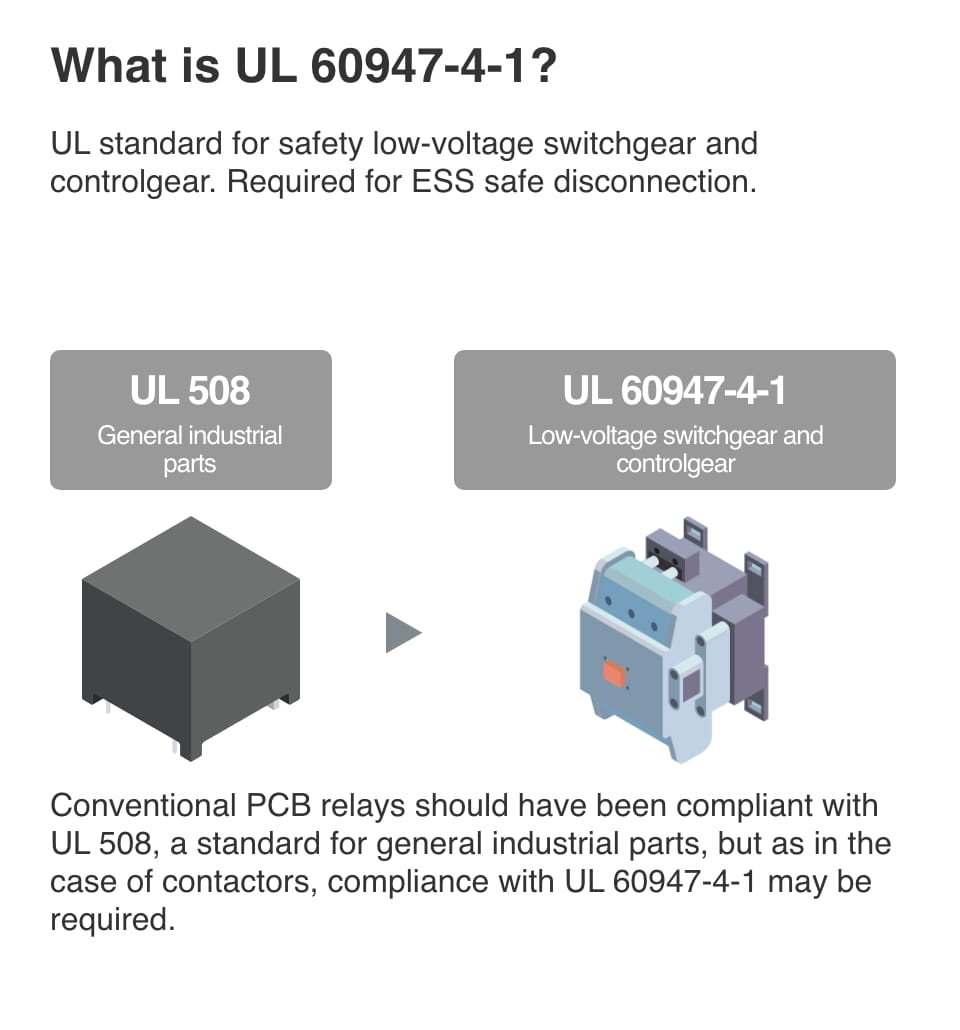
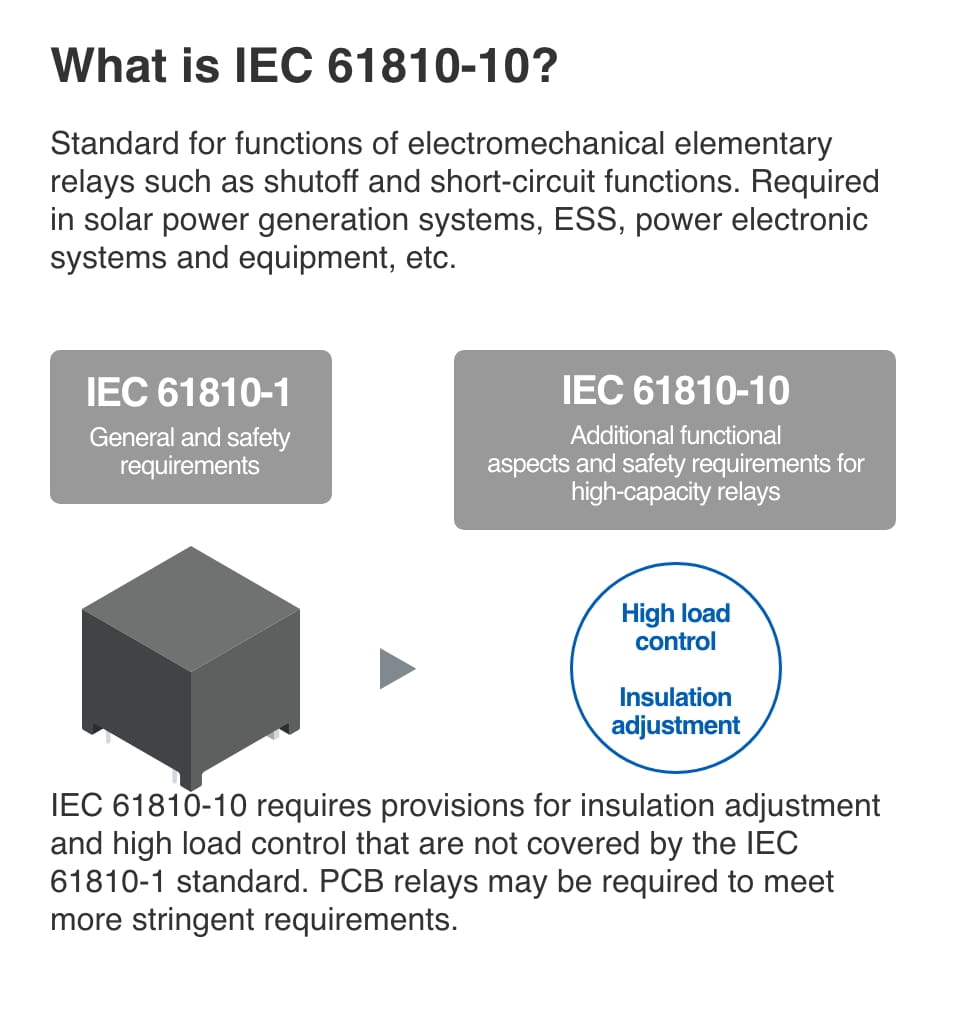
Applications requiring bidirectional switching performance (charge/discharge circuit control)
It can be used not only for ESS*1 but also for V2X*2 (V2H*3, V2B*4, etc.). Please consider using G9KB when you want to reduce the size and weight of devices and the heat generation inside the devices.
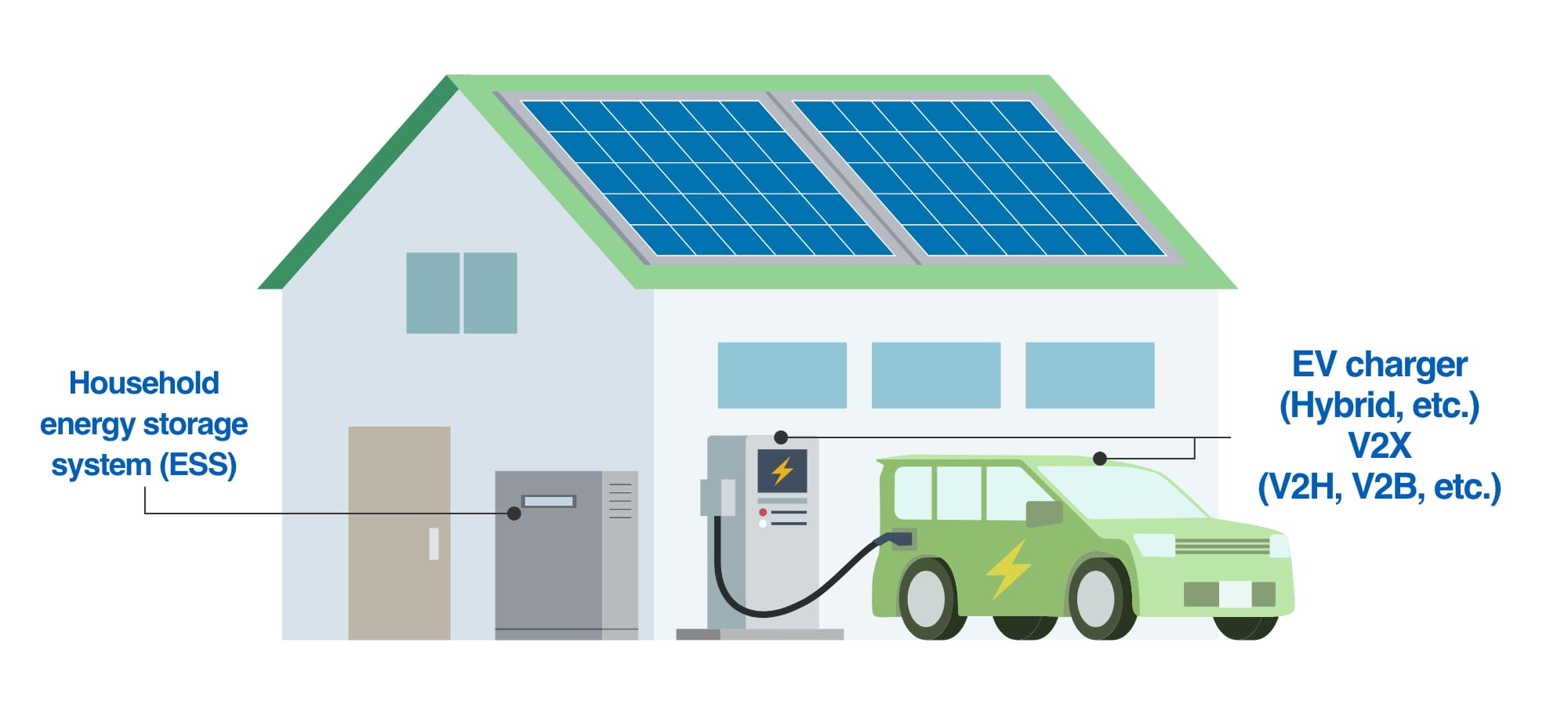
*1. ESS: Abbreviation for Energy Storage System.
It is used to store and release electric power to balance the supply and demand of energy or to supplement the demand for electric power during peak periods.
*2. V2X: Abbreviation for Vehicle-to-Everything.
It is used to improve energy efficiency in smart grids and energy management by connecting and linking a vehicle (EV/PHV/FCV, etc.) with everything.
*3. V2H: Abbreviation for Vehicle-to-Home.
By connecting a vehicle (EV/PHV/FCV, etc.) with a house, it is used to adjust the amount of electric power used in the home and to store and release energy.
*4. V2B: Abbreviation for Vehicle-to-Building.
It is used to improve building energy efficiency and power management by connecting and interacting with vehicles (EV/PHV/FCV, etc.) and a building.
